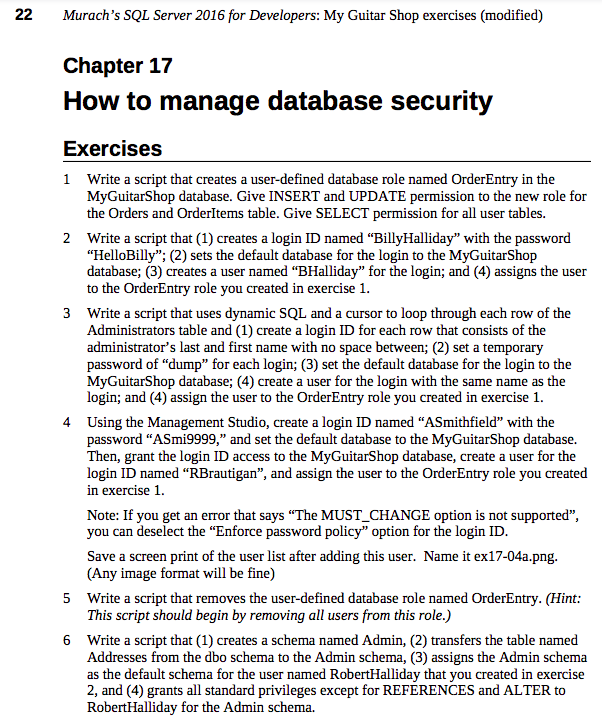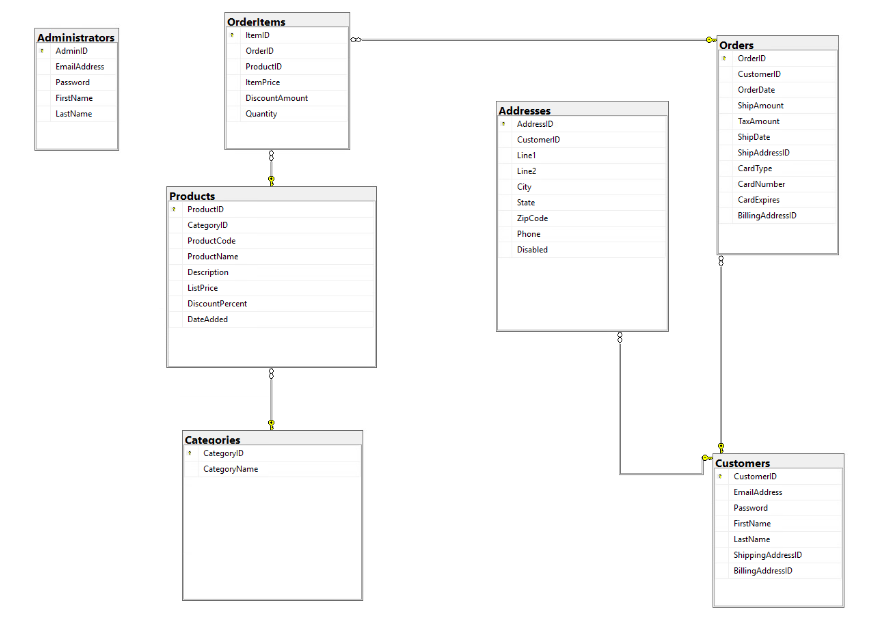Write a script that creates a user-defined database role named OrderEntry in the MyGuitarShop database. Give INSERT and UPDATE permission to the new role for the Orders and OrderItems table. Give SELECT permission for all user tables. Write a script that (1) creates a login ID named "BillyHalliday" with the password "HelloBilly"; (2) sets the default database for the login to the MyGuitarShop database; (3) creates a user named "BHalliday" for the login; and (4) assigns the user to the OrderEntry role you created in exercise 1.
SQL
SQL stands for Structured Query Language, is a form of communication that uses queries structured in a specific format to store, manage & retrieve data from a relational database.
Queries
A query is a type of computer programming language that is used to retrieve data from a database. Databases are useful in a variety of ways. They enable the retrieval of records or parts of records, as well as the performance of various calculations prior to displaying the results. A search query is one type of query that many people perform several times per day. A search query is executed every time you use a search engine to find something. When you press the Enter key, the keywords are sent to the search engine, where they are processed by an algorithm that retrieves related results from the search index. Your query's results are displayed on a search engine results page, or SER.
USE MICROSOFT SQL SERVER


Trending now
This is a popular solution!
Step by step
Solved in 2 steps






